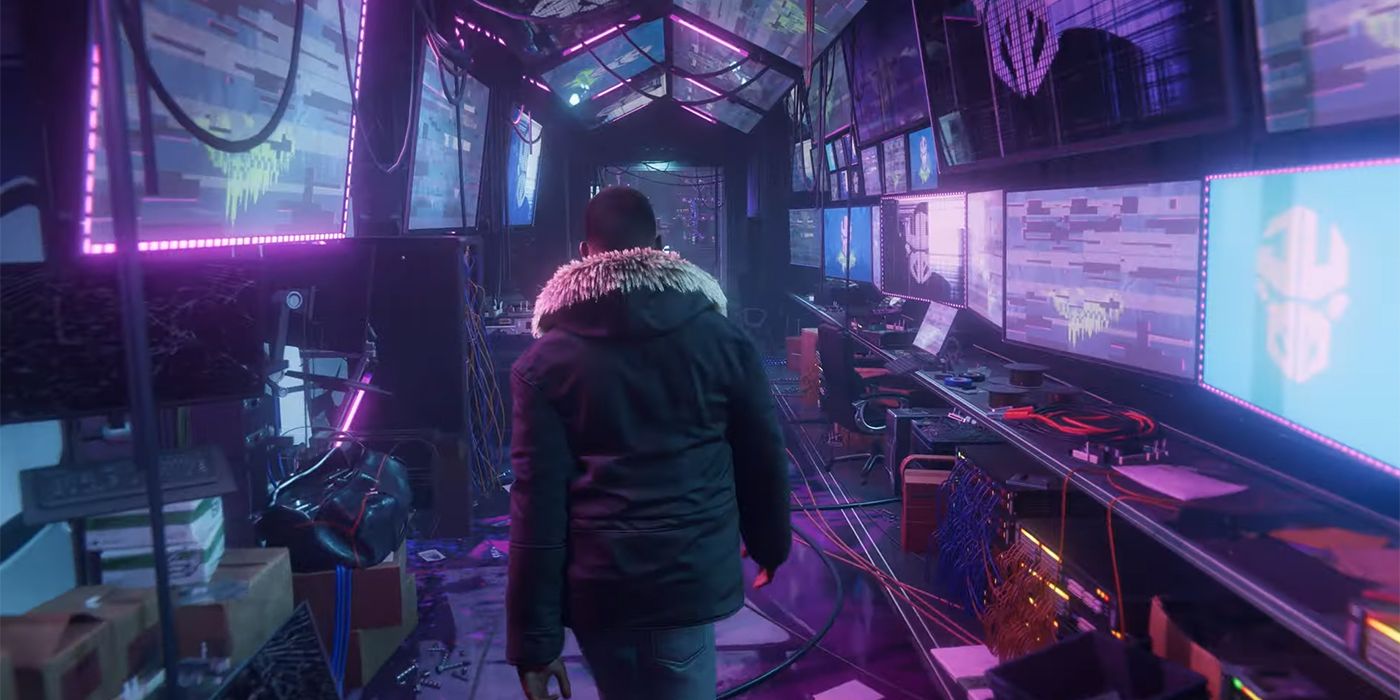Spider-Man: Miles Morales Trims the Fat From the Open World Perfectly

Spider-Man: Miles Morales has swung its way onto PlayStation consoles, with fans around the finally world filling the shoes of the young webslinger. While Spider-Man: Miles Morales is not the longest game ever, the game is full of heart due to the electric personality at the center of its plot. With fun new powers to use, re-imagined villains from the comics, and plenty of exciting set-piece moments to live out, the general consensus seems to be that the game delivers on all fronts despite its brief run time.
One big accomplishment of Spider-Man: Miles Morales, though, is its improvement over its predecessor’s open-world design. While the first Spider-Man game had plenty of open world content for players to complete, many critics pointed out how bloated the world was. There may have been a variety of activities, but most of these side objectives felt meaningless and repetitive. Rather than repeating that mistake, Spider-Man: Miles Morales pushes the idea of quality over quantity, featuring open world activities that feel rewarding and fun to do.

Spider-Man: Miles Morales features some returning activities from the first game, as Miles Morales can stop random crimes just like his mentor Peter Parker. Whether it be a car chase, mugging, or weapons deal, Miles will constantly be seeing notifications for on-going crimes throughout the city. However, this time around players should feel far less forced into doing these repetitive crimes, as a reworked reward system makes them much less of a chore. While they are still not perfect, random crimes are a necessary evil in a Spider-Man game, and Insomniac has started the process of making them better within Miles Morales’ first solo outing.
Rather than needing to do 5 crimes in each district, players only need to do one version of each random crime to complete the activity in their checklist. If they complete all the challenges of the random crime in one go, they will get all the tokens available for that specific crime and never need to do it again. This is a great step in the right direction, as players will not need to do the same car chase from the first Spider-Man on repeat to complete a district’s random crime counter.
One other positive change made to random crimes is in terms of variety, as multiple new crime types have been added. One simpler crime sees Miles chasing down a group of thugs as they flee the scene of a crime, while another has Miles following a trail of hacked leaderboards from the Tinkerer-led Underground faction. Perhaps the most enjoyable addition to the random crime lineup sees Miles protecting a FEAST truck from waves of enemies, with the criminals attempting to hijack the charitable vehicle and requiring the full attention of Spidey. If Insomniac continues down this path, random crimes in the next Spider-Man game could become a major source of entertainment.

Spider-Man: Miles Morales outdoes the original Spider-Man game in the form of challenges as well. While Spider-Man Remastered added trophies related to challenges as a way to make them more enticing, no extra rewards are needed in Spider-Man: Miles Morales. Indeed, they all feel meaningful.
One other highlight of the latest Spider-Man game is the use of the app made by Miles’ best friend Ganke, which allows the hero to take on requests from people in the city. Miles helping the community with clearing ice off of a crane, finding lost cats, and getting a car out of snow all help to capture the strengths of Spider-Man as a character, and as small as these activities are, they are something that needs to continue going forward.

Despite making some big improvements and cutting down on content, Spider-Man: Miles Morales still features some of the activities that worked in the original game. Collectibles are still a thing, though instead of a backpack with an homage to Spidey’s crimefighting encounters, these collectibles are heavily related to Miles’ story. Taking the form of time capsules left by a young Miles and his childhood companion Phin Mason, the collectibles provide great context for the relationship between the story’s most pivotal characters.
Beyond this, Spider-Man: Miles Morales’ version of Peter’s photography goals sees the hero opening crates left by the villainous Underground faction, with each box opened rewarding players with tech points. Rather than having Miles solve a computer related mini game to upgrade his powerful gadgets and gorgeous suits, the hero only has to move objects or open the doors that the crates are hidden behind. Tracking down the boxes is incredibly fun and simple, and while they are essentially just more collectibles, grabbing them is an enjoyable affair that is both relaxing and quick.
While Spider-Man: Miles Morales is a shorter chapter within Insomniac’s Spider-Man universe, its brevity has come with some major positives. With a returning collectible system that brings quick bursts of fun and story significance behind each item, every activity within Spider-Man: Miles Morales is worthwhile. If Insomniac’s next Spider-Man game builds off the groundwork laid in this spinoff adventure, it could truly be a masterpiece.
Spider-Man: Miles Morales is available now on PS4 and PS5.

Post a Comment